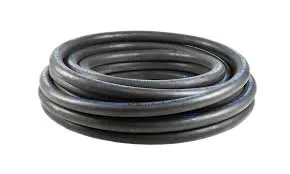atv brake lines
Understanding ATV Brake Lines Importance, Maintenance, and Upgrades
All-Terrain Vehicles (ATVs) are exciting machines that offer a thrilling experience in rugged landscapes. However, like any vehicle, ATVs require regular maintenance to ensure safety and performance. One crucial component that often gets overlooked is the brake lines. Understanding their function, maintenance practices, and upgrade options is essential for any ATV owner.
The Function of Brake Lines
Brake lines are a vital part of the braking system in an ATV. They transport brake fluid from the master cylinder to the brake calipers or drums. When you press the brake pedal, the master cylinder generates pressure, which travels through the brake lines to engage the brakes, allowing the ATV to slow down or stop. Given the high-stress environment in which ATVs operate, the condition of brake lines directly affects the efficiency and reliability of the braking system.
Maintenance of Brake Lines
Regular maintenance of brake lines is crucial for the safety and performance of your ATV. Here are some key practices to ensure that your brake lines remain in excellent condition
1. Visual Inspections Regularly inspect your brake lines for any signs of wear, cracking, or leaks. Look out for any abrasions or fraying, especially if you often ride in rough terrains.
2. Check Fluid Levels Monitor the brake fluid levels in the reservoir. Low fluid levels can indicate leaks in the brake lines or other brake components.
3. Bleeding the Brakes Over time, air can get into the brake lines, which can lead to a spongy brake feel. Regularly bleeding the brakes removes air from the lines and helps maintain optimal braking performance.
4. Replace Damaged Lines If you notice any signs of damage during your inspections, it’s crucial to replace the damaged brake lines immediately. Using OEM (Original Equipment Manufacturer) parts is recommended to assure compatibility and reliability.
atv brake lines

5. Protection from the Elements ATVs often face muddy, wet, and snowy conditions. Consider using protective sleeves or coatings to shield your brake lines from elements that could cause corrosion or damage.
Upgrading Brake Lines
For enthusiasts looking to improve their ATV's performance, upgrading brake lines can yield significant benefits. Aftermarket brake lines are often made from higher-quality materials, providing enhanced durability and responsiveness. Here are some reasons to consider upgrading
1. Stainless Steel Braided Lines These brake lines are designed to withstand high levels of pressure and temperature, making them a popular choice among performance riders. They offer better responsiveness than standard rubber lines and reduce the risk of expansion under pressure.
2. Improved Brake Feel Upgraded lines can improve the overall feel of the brakes, making the ATV more responsive and giving riders more confidence during tight maneuvers.
3. Longer Lifespan High-quality aftermarket lines tend to be more resistant to the wear and tear caused by harsh conditions, resulting in a longer lifespan compared to standard lines.
4. Custom Lengths and Configurations If you have customized your ATV or have specific needs, aftermarket manufacturers often offer options in various lengths and configurations, allowing for a tailored fit.
Conclusion
Brake lines may seem like a small component of an ATV, but they play a critical role in ensuring rider safety and optimal performance. Regular inspection and maintenance can prevent potential accidents and costly repairs. For those wishing to enhance their ATV's braking capabilities, exploring aftermarket upgrades can provide a range of advantages. Whether you’re a casual rider or an off-road enthusiast, prioritizing the integrity and performance of your ATV’s brake lines is essential for an enjoyable and safe riding experience. Remember, when dealing with components as vital as brakes, never compromise on quality—invest in the best you can for your ATV.
-
Ultimate Spiral Protection for Hoses & CablesNewsJun.26,2025
-
The Ultimate Quick-Connect Solutions for Every NeedNewsJun.26,2025
-
SAE J1401 Brake Hose: Reliable Choice for Safe BrakingNewsJun.26,2025
-
Reliable J2064 A/C Hoses for Real-World Cooling NeedsNewsJun.26,2025
-
Heavy-Duty Sewer Jetting Hoses Built to LastNewsJun.26,2025
-
Fix Power Steering Tube Leaks Fast – Durable & Affordable SolutionNewsJun.26,2025

